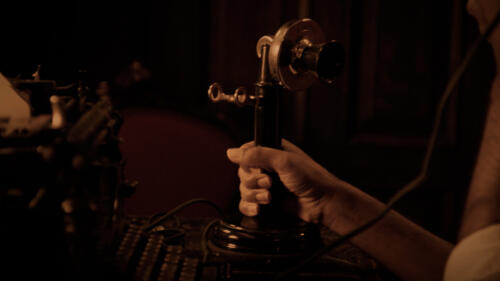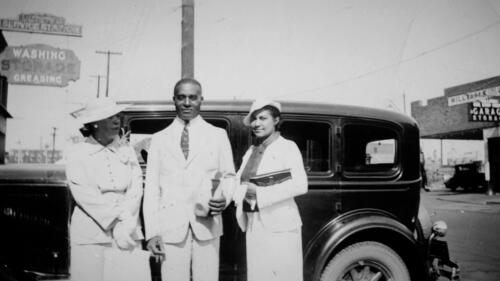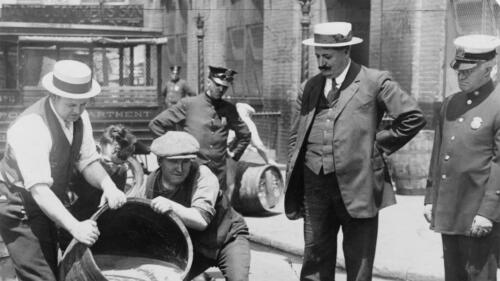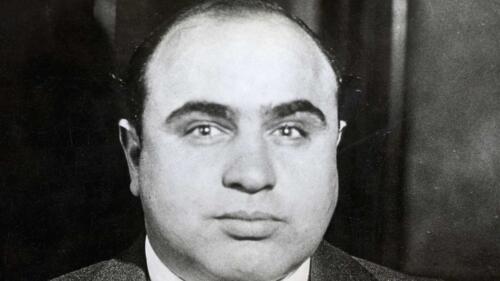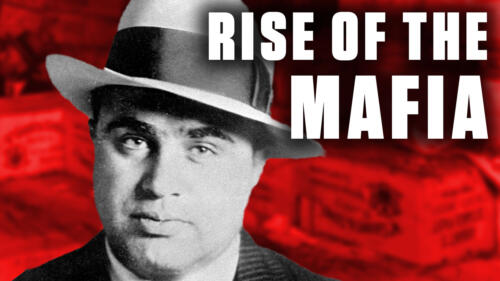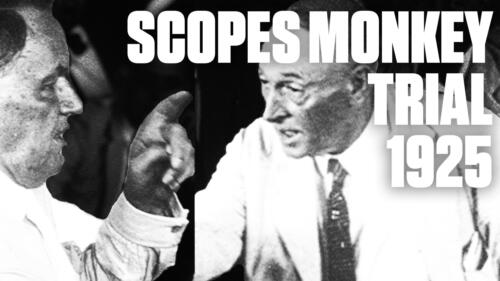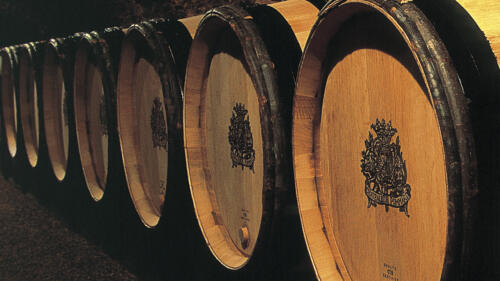1920s
During the 1920s (often referred to as the Roaring Twenties), a surging economy in the United States created an era of mass consumerism, as Jazz-Age flappers flouted Prohibition laws and the Harlem Renaissance redefined arts and culture.
Featured Overview
As African Americans flocked to Northern cities in the 1920s, they created a new social and cultural landscape.
2:54m watch

Hulton Archive/Getty Images
Featured Overview
As African Americans flocked to Northern cities in the 1920s, they created a new social and cultural landscape.
2:54m watch
Start Here

After enduring dark times, Americans were eager for a comeback.

The Greenwood district of Tulsa, Oklahoma had flourished as a neighborhood built by Black people, for Black people. In 1921 it was destroyed by a white mob. Get the facts on the attack and subsequent coverup.

During Prohibition, gay nightlife and culture reached new heights—at least temporarily.

Young women with short hairstyles, cigarettes dangling from their painted lips, dancing to a live jazz band, explored new-found freedoms.
How Prohibition Created the Mafia
How Prohibition Created the Mafia
Starting in January 1920, the United States became a dry country. Prohibition banned the manufacture and sale of alcohol in an attempt to civilize unruly Americans (and some other reasons). The experiment had many unintended consequences, but most dangerously, it fostered the rise of organized crime and the American Mafia.
3:51 watch

3 Artistic Movements of the 1920s
Explore All Related Topics

After enduring dark times, Americans were eager for a comeback.
The deadliest race massacre in American History started with two people. Find out the origins of this tragic event in this History special, "Tulsa Burning: The 1921 Race Massacre."
7:13m watch
Located in Tulsa, Oklahoma, this residential neighborhood known as Greenwood provided an opportunity for Blacks to accumulate wealth and make advancements during a time of racial terror, in this History special, "Tulsa Burning: The 1921 Race Massacre."
6:30m watch

The self-styled 'King of the Osage Hills' masterminded a heinous spate of killings targeting oil-rich Indians.

These writers were part of the larger cultural movement centered in New York City’s Harlem neighborhood and offered complex portraits of Black life in America.

The Greenwood district of Tulsa, Oklahoma had flourished as a neighborhood built by Black people, for Black people. In 1921 it was destroyed by a white mob. Get the facts on the attack and subsequent coverup.

Historic images of Tulsa, Oklahoma's Greenwood district reveal how the 1921 mob attack devastated the nation's Black cultural and economic mecca.

Before the Tulsa Race Massacre, the city’s African American district thrived as a community of business leaders and visionaries.

Few historians dispute that planes flew low over the city's prosperous Black district during the 1921 attack. What's less clear: whether bullets were fired or incendiaries were dropped.
Here are 10 things you didn't know about prohibition.
3:05m watch

Before carrying passengers, America’s most iconic airlines hauled the mail. It was one of the riskiest jobs around.
Learn the history of Al Capone's secret city.
3:38m watch

For some, the Great Depression began in the 1920s.

Stripped of wartime protections and branded as anti-American, labor unions languished in the Roaring Twenties.

No beer? No problem. Better refrigeration, together with innovations in making and selling frozen treats, helped steer people toward this 'refreshing and palatable food.'

A search for mass graves of the victims of the 1921 Tulsa Race Massacre highlights an event that some had tried to erase from history.

When a rumor catapulted into an explosion of frustration and rage, a fabled Black neighborhood in Manhattan turned into a battleground.

Prohibition proved no match for the deadly virus—at least for a while.

From jazz and blues to poetry and prose to dance and theater, the Harlem Renaissance of the early 20th century was electric with creative expression by African American artists.
When Prohibition began, two ordinary men thought it would be fun to enforce the new law. They were right.
1:02m watch

The Kennedy patriarch amassed great wealth partly by selling alcohol, but he also made savvy deals and sales that became extremely lucrative.

Greenwood Avenue featured luxury shops, restaurants, movie theaters, a library, pool halls and nightclubs.

Thomas J. Midgley is now considered one of history's most dangerous inventors.

During Prohibition, gay nightlife and culture reached new heights—at least temporarily.

The Soviet masses did not respond well to 'prozodezhda,' a 1920s experiment that sought to revolutionize dress.

As Americans dreamed of amassing fabulous fortunes, many became vulnerable to cons.

World War I’s legacy of debt, protectionism and crippling reparations set the stage for a global economic disaster.
Starting in January 1920, the United States became a dry country. Prohibition banned the manufacture and sale of alcohol in an attempt to civilize unruly Americans (and some other reasons). The experiment had many unintended consequences, but most dangerously, it fostered the rise of organized crime and the American Mafia.
3:51m watch

The 13-year ban on beer production during Prohibition forced America’s biggest brewers to find creative ways to remain in business.

During the 13 dry years of Prohibition, sneaky Americans went to great lengths to conceal their alcohol consumption from law enforcement.

100 years ago, the KKK began terrorizing Catholic immigrants in the name of Prohibition.

Kingpins like Al Capone were able to rake in up to $100 million each year thanks to the overwhelming business opportunity of illegal booze.

Aeronautics expert. Historian. Scientist. Economist. Henry Woodhouse passed himself off as all these and more. In reality, he was a con artist—and a convicted killer.

During the Roaring Twenties, Prohibition seemed here to stay. Then the economy collapsed, and the “noble experiment” crumbled along with it.

Hindsight is 20/20, but the stock market threw signals back in the summer of 1929 that trouble lay ahead.

Carry Nation had a bad history with alcohol—and she went to extremes to try and get it banned.

From new money to consumer culture to lavish parties, F. Scott Fitzgerald's 1925 novel depicted the heyday of the 1920s—and foreshadowed the doom that would follow.

In 1912, the Titanic was glorified as the largest and most luxurious passenger ship in history. See it before and after its tragic sinking.

The bungled crime featured an affair, a murder and a planned insurance scam.

Young women with short hairstyles, cigarettes dangling from their painted lips, dancing to a live jazz band, explored new-found freedoms.

Known then as the Trial of the Century, the famous court case was the ultimate showdown between Evolution and the Church.
The 1925 Scopes Monkey Trial was one of the most important legal battles of its time. Two of the greatest speakers of the era, Clarence Darrow and William Jennings Bryan, faced off in a debate encompassing science, religion, and Constitutional rights.
2:17m watch

A nighttime boat chase that ended in gunfire and the deaths of three men triggered outrage that would lead to a new amendment to the U.S. Constitution.

Before meeting his young wife, 51-year-old New York real estate titan Edward Browning had taken out newspaper ads saying he wanted to adopt a 14-year-old girl.

Some people even thought both parties should nominate him in the 1920 presidential race.

The Great Depression, the worst economic downturn in modern history, profoundly affected the daily life of American families in ways large and small.

The stock market crash of 1929 was the worst economic event in world history. What exactly caused the stock market crash, and could it have been prevented?

During the Tulsa Race Massacre, a white mob attacked residents, homes and businesses in the predominantly Black Greenwood neighborhood of Tulsa, Oklahoma over 18 hours on May 31-June 1, 1921. The event remains one of the worst incidents of racial violence in U.S. history.

Flappers were young, independent American women who became a cultural force in the 1920s as they challenged barriers to economic, political and sexual freedom.

Al Capone was widely believed to have ordered the hit.

Meet Izzy and Moe, the Prohibition era’s canniest crimebusters.

Nearly 500 patrons perished in the 1942 inferno at Boston’s Cocoanut Grove.

It wasn’t gasoline—but moonshine—that fueled the growth of stock car racing in Appalachia and led to the rise of NASCAR.

The Scopes Trial, or the Scopes Monkey Trial, was a 1925 trial in which Clarence Darrow and William Jennings Bryan debated the teaching of evolution in schools.

'Petting parties' added some steam to Jazz Age soirees.

The Teapot Dome Scandal of the 1920s shocked Americans by revealing an unprecedented level of greed and corruption within the federal government. In the end, the scandal would empower the Senate to conduct rigorous investigations into government corruption.

In 1925, John T. Scopes—the defendant in the famous “Monkey Trial”—was indicted for teaching the theory of evolution in his high school science class.

Learn about the notorious Chicago gangster—from the crime he did time for at Alcatraz to his feelings about the nickname 'Scarface.'

Explore 10 surprising facts about the glamorous and tragic life of one of the 20th century’s most celebrated writers.

Ninety-five years after its inception, learn 10 fascinating facts about America’s nearly 14-year “noble experiment” in alcohol prohibition.

Look back at America’s surprising reaction to the end of Prohibition.

What do you get when you send Americans underground to consume alcohol? Finger foods.
Police raid a garage in Chicago that contained five hundred and thirty-seven barrels of alcoholic beverage, $30,000 worth of illegal drink.
0:54m watch
As African Americans flocked to Northern cities in the 1920s, they created a new social and cultural landscape.
2:54m watch

F. Scott Fitzgerald (1896-1940) was an American writer, whose books helped defined the Jazz Age. He is best known for his novel "The Great Gatsby" (1925), considered a masterpiece. He was married to socialite Zelda Fitzgerald (1900-1948).

The Roaring Twenties were a Jazz Age burst of prosperity and freedom for flappers and others during the Prohibition era, until the economy crashed in 1929.

The Prohibition Era began in 1920 when the 18th Amendment outlawed liquor sales per the Volstead Act, but in 1932 the 21st Amendment ended Prohibition.

The Harlem Renaissance was the development of the Harlem neighborhood in NYC as a black cultural mecca in the early 20th century and the subsequent social and artistic explosion that resulted. Lasting roughly from the 1910s through the mid-1930s, the period is considered a golden age in African American culture. Famous artists include Langston Hughes, Zora Neal Hurston and Aaron Douglas.




